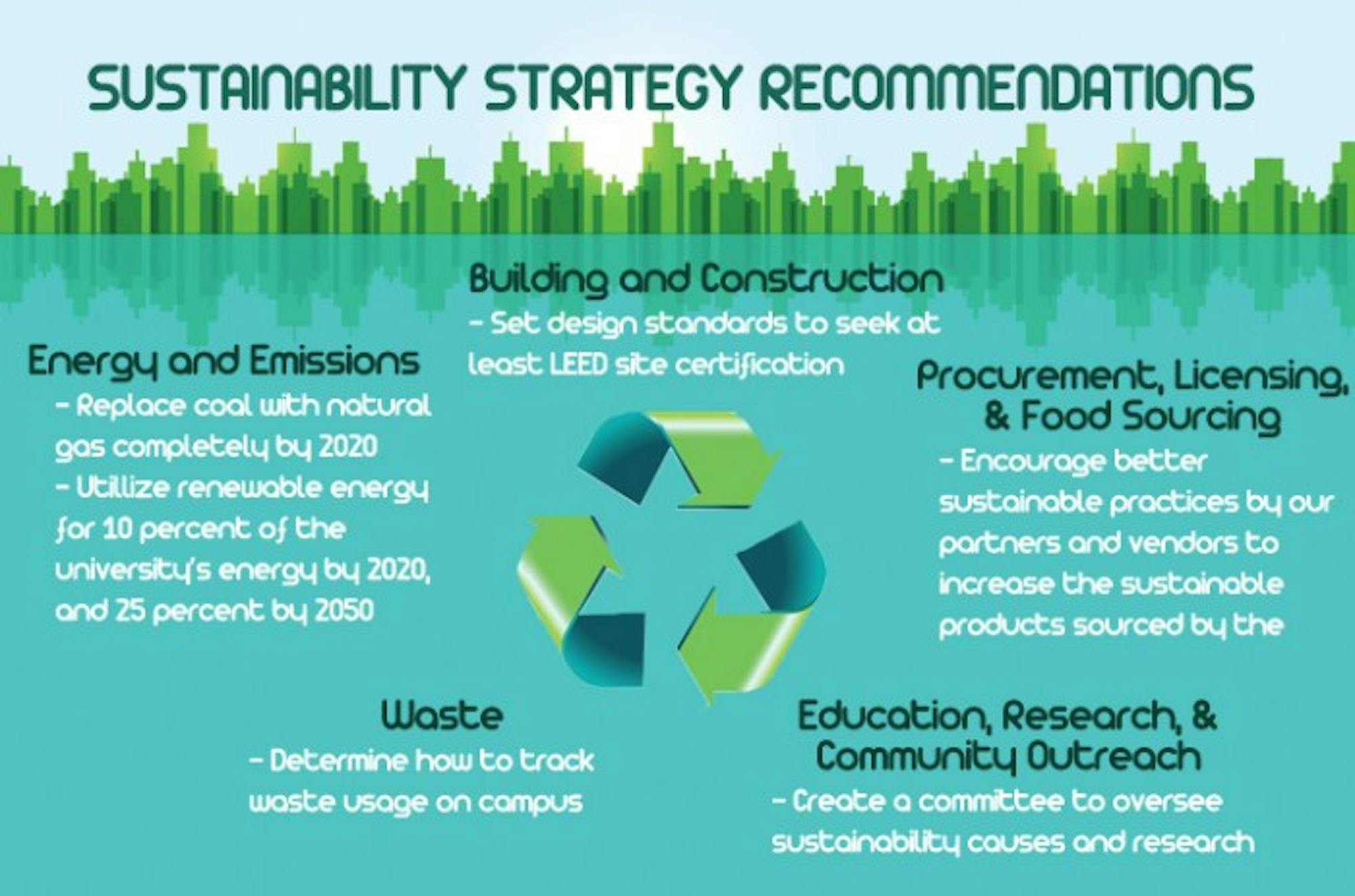On Sept. 20, University president Fr. John Jenkins announced a five-year sustainability plan which includes eliminating coal usage on campus by 2020 and providing at least 25 percent of the University's energy through renewable and recoverable energy by 2050, among other benchmarks and goals to make Notre Dame a “greener” campus. 
To implement the plan, recommendation committee member and associate professor of accountancy Sandra Vera-Munoz said the committee chair, director of sustainability Linda Kurtos, and the committee’s sponsor, associate vice president John Affleck-Graves, are putting together a “standing committee that will oversee working groups.”
“Those [working groups] are the ones who are going to roll up their sleeves and make specific concrete actions to make this happen,” Vera-Munoz said.
The Comprehensive Sustainability Strategy was written by the committee over the fall 2015 and spring 2016 semesters in response to Pope Francis’ environmental encyclical “Laudato si’.”
“We were fortunate to have knowledgeable members in so many areas of sustainability that touched the University: energy, law, construction, operations, research, education, facilities, procurement, strategy,” Kurtos said in an email. “We started by identifying the areas that we thought should be the major focus areas for the strategy and used that foundation as the basis for the strategy discussions.”
The 20-member committee — made up of faculty, administrators and students — convened once a month over the last year to work on the plan, which outlined recommendations for six areas: energy and emissions; water; building and construction; waste; procurement, licensing and food sources; and education, research and community outreach.
“[Kurtos] was very systematic about how we went through the topics,” Vera-Munoz said. “We would receive an email for what we’re talking about next time, and, ‘here’s a draft.’ Then we’d meet in a big committee, provide our input into the process.”
Senior and GreeND president Tessa Clarizio, who sat on the committee, said the original goal was to have the strategy ready by the end of the fall semester 2015, but discussion pushed it back.
“There was a lot of difference in how to approach the plan,” she said. “There was one mindset — which was held by the people who had the most power in the committee — that we should set lower goals and by setting lower goals we know that we’re able to achieve them, and then when we overachieve that’s a huge accomplishment. The other side — which I was on, along with a lot of the faculty — was that we should be aiming really high, that way even if we don’t achieve it we’ve still made a lot of progress.”
Because of the already extended timeline, biochemistry professor and committee member Anthony Serianni said he understood there was “some urgency” to get the document to Jenkins as soon as possible, even if the plan was not perfect.
“I got to the point in my discussion of the plan where I felt I should be satisfied with what we accomplished,” he said. “I felt it was a modest step forward. We definitely don’t have in the plan what we should, but I decided at the end of the day to accept what was in there, even though I know in my own heart it’s not the way it should be.”
Director of the Center for Sustainable Energy Peter Burns said the plan’s strong point was its diversified approach.
“I think that the strategy developed by the University for energy sustainability is good, in terms of the diversification of approaches, such as putting a hydrogenerator in the river, geothermal wells, the possibility of solar fields,” Burns said. “The University has taken a sensible, diversified approach to securing the energy future of the University is something that has the potential to be a volatile market.”
Burns said the weakest aspect of the plan is “not setting up challenging enough goals, in almost any regard.”
Clarizo echoed the sentiment that the plan was not challenging enough.
“I agree it could be a lot more ambitious, particularly in the energy sector,” she said. “There is the goal of 25 percent renewable by 2050, which is a lot farther behind what a lot of our peer institutions are looking at.
“Having that knowledge of what our peer institutions are doing and especially our call as a Catholic university from ‘Laudato si’,’ Notre Dame has a moral obligation to be a leader in this field. People will be looking to Notre Dame as an example. The Catholic community looks up to Notre Dame as an example, so we need to be that example.”
Affleck-Graves said many items in the plan do not yet have “quantitative goals” because the University needs to first determine how to measure those items.
“When we got to water, it turns out we don’t have an ability to measure anything at the moment other than the gross water intake of the University,” he said. “For water, the first goal becomes find a way to measure how water is being used in different segments of the University. We get a measure of how much water we pump, but we have no idea how it’s being used. That makes setting a goal very difficult.”
Affleck-Graves said the strategy should be viewed as a “living document.”
“It’s a final document in the terms of the sustainability plan for the University,” he said. “It’s impossible to write a plan today that will be equally relevant three or four years from now. … The point is that we now have a document and an approved sustainability plan.
“We should review that plan every year to see if things need to be changed. That will be the goal of this oversight committee. It becomes a living document instead of a static document. It’s always a plan, it’s always looking forward. But that doesn’t mean the plan doesn’t get changed.”













